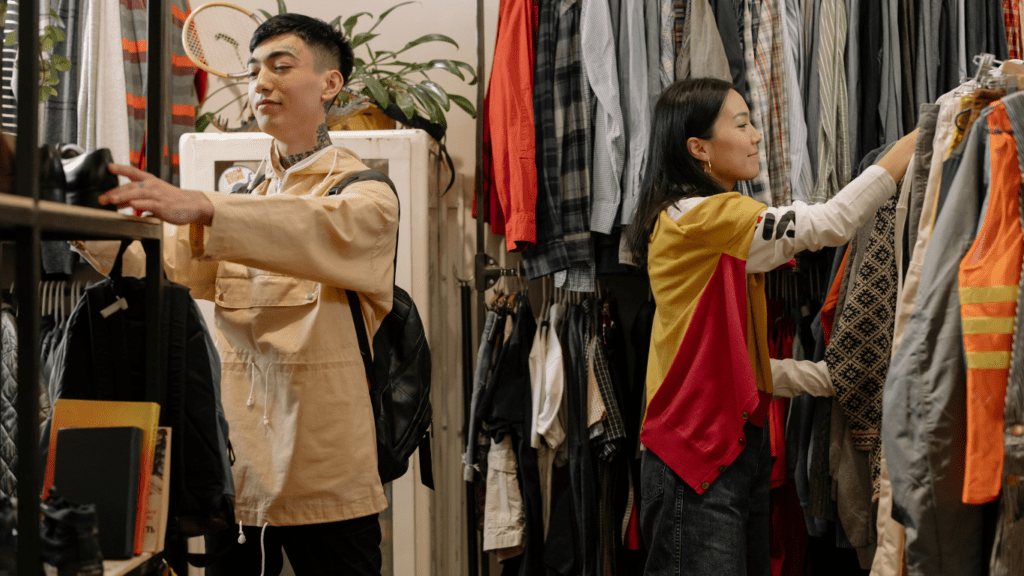Environmental Benefits of Secondhand Shopping
Secondhand shopping presents numerous environmental advantages, making it a sustainable choice for conscious consumers.
Reduced Waste and Landfill Contributions
Buying secondhand items means fewer products end up in landfills, reducing waste significantly. The Environmental Protection Agency (EPA) states that Americans throw away approximately 12 million tons of furniture annually.
By purchasing used furniture, I help in cutting down this staggering figure. Additionally, opting for pre-owned clothes, electronics, and household goods prevents these items from contributing to landfill overflow.
Lower Environmental Footprint
Producing new items, especially textiles, requires vast amounts of resources and energy, leading to significant carbon emissions. The Ellen MacArthur Foundation reports that textile production alone emits 1.2 billion tons of CO2 annually.
By shopping secondhand, I actively reduce the demand for new production, which in turn lowers greenhouse gas emissions. Moreover, it decreases water and energy consumption linked to manufacturing processes, offering a more eco-friendly alternative.
Economic Advantages of Buying Secondhand

Buying secondhand isn’t just eco-friendly; it offers significant economic benefits too. Shoppers can save money and support local economies, making it a win-win.
Cost Savings for Consumers
Secondhand items often come at a fraction of the price of new ones. Consumers find high-quality clothing, electronics, and furniture at reduced costs. For example, gently used designer clothes might sell for 70% less than retail.
This affordability makes secondhand shopping attractive for budget-conscious individuals and families.
Support for Local Businesses
Secondhand stores, such as thrift shops and consignment boutiques, boost the local economy. These businesses often source their inventory locally, keeping money within the community.
By shopping secondhand, I contribute to the success of local entrepreneurs and small business owners, fostering economic growth. Additionally, local employment opportunities increase when these businesses thrive, benefiting the community further.
Social Impacts of Secondhand Shopping
Secondhand shopping doesn’t just benefit the environment and economy, it profoundly impacts social structures by promoting sustainable practices and community engagement.
Promoting a Sharing Economy
By buying secondhand, consumers contribute to a sharing economy that prioritizes resource efficiency. The sharing economy encourages reuse and recycling, reducing the need for new products.
For example, purchasing pre-owned clothing keeps garments in circulation longer, minimizing textile waste. This model fosters a culture where ownership is temporary and goods are continually reused, maximizing their utility.
Enhancing Community Connections
Secondhand shopping enhances community connections by creating networks where people exchange goods, stories, and experiences. Local thrift stores, consignment shops, and online marketplaces bring people together, creating a sense of belonging.
For instance, swapping clothes at a neighborhood event fosters direct interaction, building trust and camaraderie. These connections strengthen communal bonds and encourage a supportive, sustainable lifestyle.
Challenges and Considerations
Although secondhand shopping offers numerous benefits, it comes with certain challenges and considerations.
Quality and Reliability Concerns
Finding high-quality items consistently can be a challenge in secondhand shopping.
- Used goods, for example, clothing and electronics, may show signs of wear or may not function as intended.
- Inspecting items thoroughly before purchase mitigates some risk.
- Many thrift stores and online marketplaces offer return policies or guarantees to help address these concerns, but examining the return policy before buying is important.
Overcoming Stigmas Attached to Used Goods
Secondhand shopping often carries a stigma that items are of lower status or quality compared to new ones. This perception may deter some people from exploring thrift stores or online resale platforms.
However, this stigma is slowly changing as conscious consumption trends grow. People now increasingly view purchasing secondhand as a positive, sustainable choice.
Awareness campaigns and social media influencers promoting thrifted fashion and secondhand finds help shift public perception, associating secondhand shopping with eco-consciousness and uniqueness rather than inferiority.




